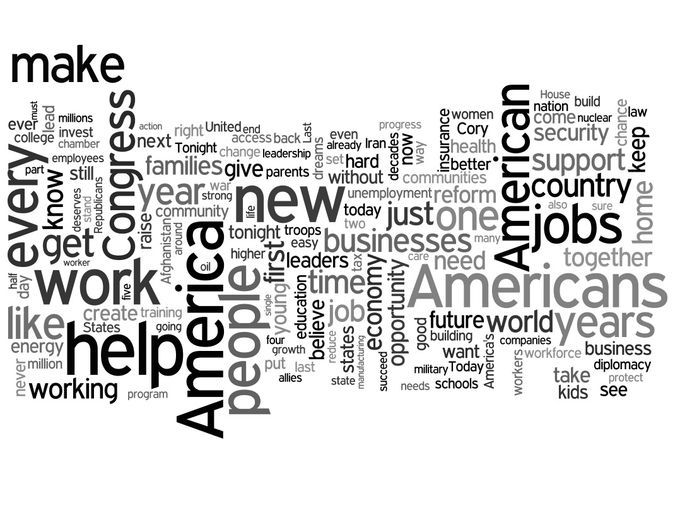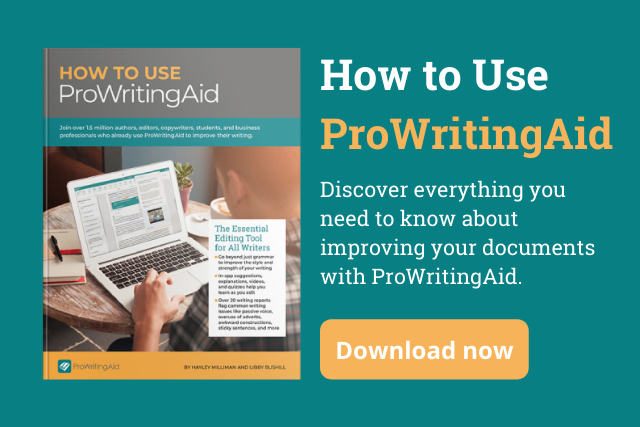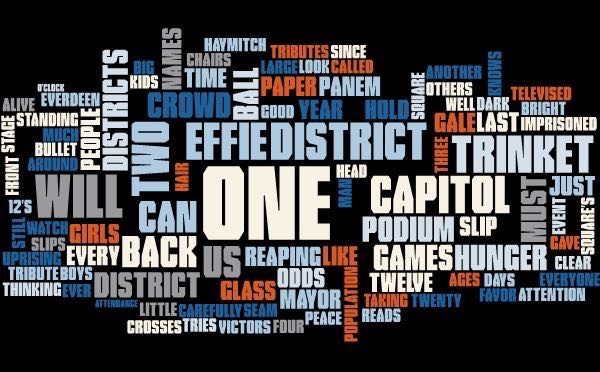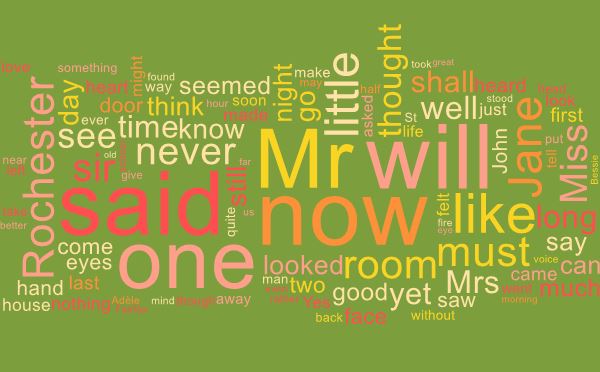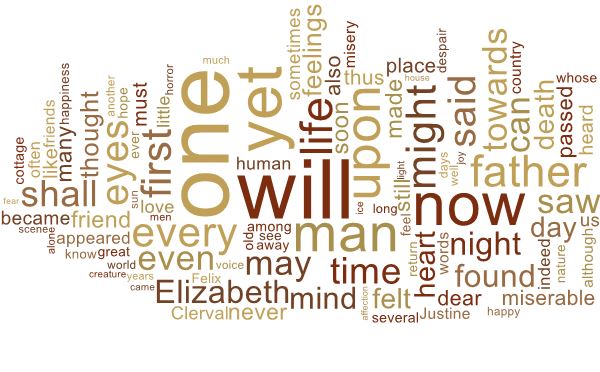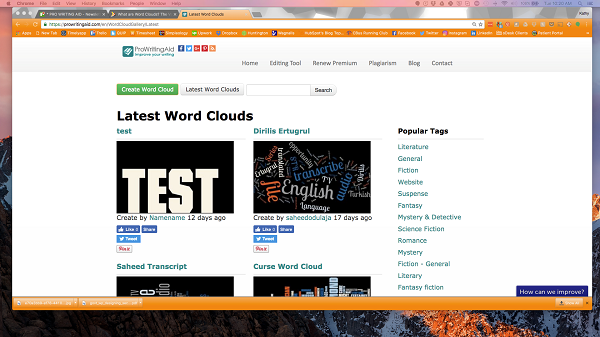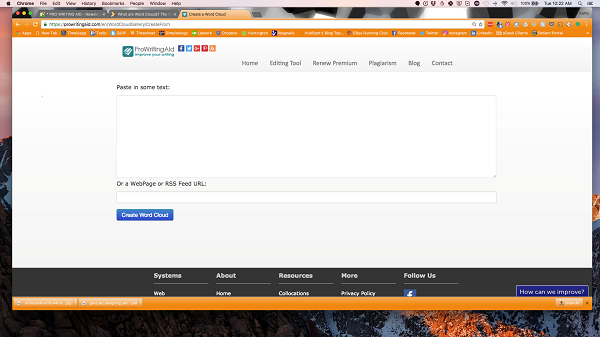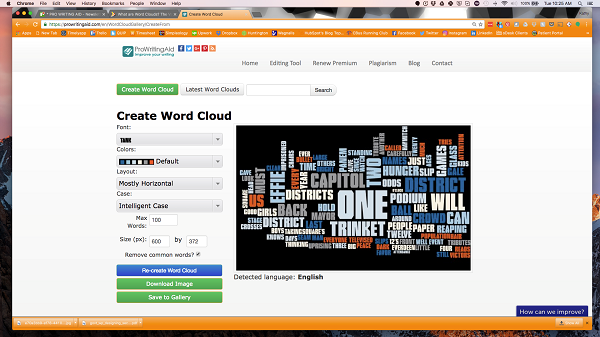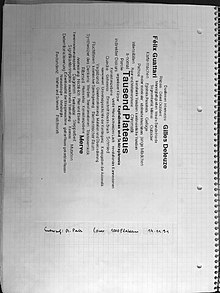Data visualizations (like charts, graphs, infographics, and more) give businesses a valuable way to communicate important information at a glance, but what if your raw data is text-based? If you want a stunning visualization format to highlight important textual data points, using a word cloud can make dull data sizzle and immediately convey crucial information.
When you’re looking at an in-depth data analysis, do you find it difficult to discern which points are the most important?
Anyone who’s ever stared blankly at a lengthy database or long pages of text can relate. With so many insights to comprehend, how do you know where to begin?
Word cloud generators can help simplify this process.
If you’ve ever looked at a jumble of disparate words that seem to have no correlation until you investigate further, you’ve seen a word cloud. These are powerful tools across myriad industries, from art to science.
Today, we’re exploring their use in the field of data visualization. Along the way, we’ll share how your organization can use them to help pinpoint important issues and better direct your steps forward.
Ready to learn more? Let’s get started!
What are Word Clouds?
Word clouds (also known as text clouds or tag clouds) work in a simple way: the more a specific word appears in a source of textual data (such as a speech, blog post, or database), the bigger and bolder it appears in the word cloud.
A word cloud is a collection, or cluster, of words depicted in different sizes. The bigger and bolder the word appears, the more often it’s mentioned within a given text and the more important it is.
Also known as tag clouds or text clouds, these are ideal ways to pull out the most pertinent parts of textual data, from blog posts to databases. They can also help business users compare and contrast two different pieces of text to find the wording similarities between the two.
Perhaps you’re already leveraging advanced data visualization techniques to turn your important analytics into charts, graphs, and infographics. This is an excellent first step, as our brains prefer visual information over any other format.
Yet, what do you do if your raw data is text-based in nature?
Much of the research your organization conducts will include at least some form of an open-ended inquiry that prompts respondents to give a textual answer.
For instance, you might ask current customers what they like or don’t like about your new product line. Or, you could ask them to give suggestions on how your organization could improve. They could also have the chance to elaborate on any pain points they’re experiencing.
There are industry tools that allow you to code such open-ended data so users can understand it quantitatively. Yet, these don’t come cheap. Word clouds offer a cost-effective, yet powerful, alternative.
With these, you can still quantify your text-based insights into measurable analytics. The only difference? You won’t create a chart or graph as you would with a set of numbers.
Instead, you’ll create a word cloud generator to transform the most critical information into a word cloud.
Here’s an example from USA Today using U.S. President Barack Obama’s State of the Union Speech 2012:
As you can see, words like “American,” “jobs,” “energy” and “every” stand out since they were used more frequently in the original text.
Now, compare that to the 2014 State of the Union address:
You can easily see the similarities and differences between the two speeches at a glance. “America” and “Americans” are still major words, but “help,” “work,” and “new” are more prominent than in 2012.
Using word clouds isn’t exclusively for creating presidential eye candy. Keep reading to discover how word clouds can benefit your business.
Where Word Clouds Excel for Businesses
In the right setting, word cloud visualizations are a powerful tool. Here are a few instances when word clouds excel:
- Finding customer pain points — and opportunities to connect. Do you collect feedback from your customers? (You should!) Analyzing your customer feedback can allow you to see what your customers like most about your business and what they like least. Pain points (such as “wait time,” “price,” or “convenience”) are very easy to identify with text clouds.
- Understanding how your employees feel about your company. Text cloud visualization can turn employee feedback from a pile of information you’ll read through later to an immediately valuable company feedback that positively drives company culture.
- Identifying new SEO terms to target. In addition to normal keyword research techniques, using a word cloud may make you aware of potential keywords to target that your site content already uses.
When Word Clouds Don’t Work
As mentioned, word clouds aren’t perfect for every situation. You wouldn’t use a pie chart to show company revenue growth over time, and you shouldn’t use word clouds for every application, either. Here’s when you want to avoid using a word cloud.
- When your data isn’t optimized for context. Simply dumping text into a word cloud generator isn’t going to give you the deep insights you want. Instead, an optimized data set (one handled by an experienced data analysis team) will give you accurate insights.
- When another visualization method would work better. It’s easy to think “Word Clouds are neat!” and overuse them — even when a different visualization should be used instead. You need to make sure you understand the right use case for a word cloud visualization.
There are many other instances when a different visualization should be used over word clouds. (Feel free to contact one of our data analysts to learn more.) More complex data sets and projects require a team of developers and designers for a complete transformation. In could an infographic or dashboard, but word cloud applications are limited to, well, words.
What is a Word Cloud Generator?
As its name implies, an online word cloud generator is a tool that scans a body of text, turning it into component words.
From there, it can create a word cloud that highlights the most frequently mentioned words. If you don’t prefer the cluster shape, most tools enable you to format the word cloud in various ways, including:
- Horizontal lines
- Columns
- Formed to fit a certain shape
Most providers will also allow users to choose different layouts, fonts and color schemes depending on their preference. This means you can make one to match the color scheme of your brand, your partners, or your clients.
While the color used on a word cloud holds a primarily aesthetic value, you can contrast the hues to help categorize words or illustrate a separate data variable.
Why Use a Word Cloud Generator?
Think word clouds aren’t relevant to your organization? Think again.
These are an unexpected yet powerful way to display important data visualizations. Let’s take a look at a few of the top ones.
1. Understanding Client Issues
How are you currently analyzing your customer satisfaction levels? From polls and surveys to social media posts and more, your audience is talking about your brand.
As they do so, they’re delivering valuable insights into the psyche of your target customer. What’s making them tick and what to do they love? Are there any issues that seem to pop up time and again?
It can be difficult to find the answers to these questions if you’re simply reading each comment on an individual basis. Yet, when you create a word cloud with this feedback, you can quickly visualize what everyone is talking about.
For instance, you might notice that phrases such as “wait time” or “attitude” appear to dominate the cloud. This can reveal your customers’ pain points.
Or, you might see positive terms such as “affordable” and “customer service” towering over others, revealing what you’re doing right. Either way, you’ll know which topics to focus on at your next meeting, and you’re already one step in the direction of change.
2. Quickening Business Actions
That important marketing research report just came in at 5:00 p.m. The only problem? It’s 50 pages long.
You’d love to read through it line by line, but you don’t have enough hours in the day, and you’re supposed to give a brief on the data the next morning. This is where a word cloud generator can help.
When you copy the text into the generator and let it do its job, you can see in seconds which talking points appear the most frequently. Then, you’ll know where to start your search to hit the most important parts.
3. Analyzing Employee Sentiment
When you ask employees to share their feedback and opinions about the workplace, what do you do with those responses? It can be difficult to turn this kind of unstructured data into meaningful action if you don’t know where to start.
This is where word cloud visualizations can help.
When you’re able to see which points your employees are discussing at the highest rate, you’ll know how to make valuable and meaningful changes that can boost morale, strengthen company culture, and improve performance.
4. Simplifying Technical Data
You could present highly technical researching findings to a non-technical audience, such as your community board of directors. Yet, when you do so, it’s common to look into an audience of blank stares.
When you present a word cloud instead, you’re able to share the same findings in a more accessible and engaging way. This expands your reach and enables you to share important information in a way that doesn’t require advanced technical understanding.
5. Searching for Patterns in Data
With quantitative data, charts, graphs, and other data visualizations can help you identify key patterns. However, pulling these same insights from qualitative data can prove cumbersome at best and impossible at worst.
A word cloud generator makes this process a cinch. Those words you see overpowering the others? Those are your salient points and overlapping themes.
These would be difficult to find in a tabular format, but they pop out in a word cloud.
6. Search Engine Optimization
You have a good basic grasp on the kinds of keywords that your target audience wants to see. In fact, you might even use a keyword generator to find the most popular ones in your industry niche.
However, do you really know how Google sees your website?
The answer to this question can make or break your Search Engine Optimization (SEO) strategy.
You can use a word cloud generator to see how your content appears to Google bots and similar machines. While it won’t reveal the more technical elements of SEO such as headers, backlinks, and alt tags, it does help you see the general message that your page conveys.
This is important because when Google “looks” at your page, it does so by scanning its content and code. You might think you’re getting the right points across, but do they really dominate? Your word cloud can reveal if you’re giving enough attention to the keywords that matter.
How to Make a Word Cloud
As shown by their increasing popularity, making a word cloud for your website or business isn’t difficult, but there are some important considerations that need to be made so your visualization is more than just eye-candy. While word clouds can be incredible tools for data visualization, it’s important to understand how to use them the right way.
Step 1: Optimize Your Data Set
First, you’ll want to get a valuable, text-based data set. Make sure the data set you’re using is both text-based and optimized for context. Copying and pasting just any textual data into a word cloud generator might not give you the exact insights you need.
Not sure where to begin?
Our team of data analysts is skilled in taking unstructured text and turning it into an optimized data set. First, we’ll help you make sure the source data you’re referencing is both usable and actionable. Then, we’ll compile it in a way that draws out the most interesting and relevant content. Having an experienced analyst compile this helps to ensure your source data is actually usable.
Step 2: Use a Word Cloud Generator Tool
Once your data set is in place, your next step is to run it through a word cloud generator tool. Many businesses like and use Wordle, but there are many others you can try, too (such as Tagxedo and WordItOut). The downside to these free tools is many sites, including Wordle, automatically add all text clouds to their portfolio. This means any site visitor can see it, potentially undermining your marketing efforts. (Check your individual tool’s policies to see if your word cloud will be used in this way.)There are many online resources and apps you can use to perform this step, including:
- Wordle
- Tagxedo
- Tag Crowd
- WordItOut
- Word Cloud Generator for Chrome
- Word Cloud Python tools
- Google Word Cloud tools
Step 3: Export the Word Cloud
Once you create your word cloud, you need to move it from the program to your files. Some platforms will enable you to download the image as a PDF, although many won’t make that easy. In some cases, you’ll have to take a screenshot of the image and save it that way.
Before you close out of the program and start reviewing the data, there’s one security precaution to keep in mind.
While most of the programs above are either free or low-priced, keep in mind that there can be some drawbacks to the convenience they offer. For instance, any time you create a word cloud in Wordle, it saves it to its virtual portfolio.
This might not be a deal-breaker if the data you’re compiling and analyzing isn’t confidential or highly sensitive. Yet, if you work in an industry (such as healthcare or banking) that emphasizes confidentiality and customer data protection, this can render the service unusable.
It’s also a drawback if you’re using a word cloud for marketing purposes. If anyone can search Wordle’s portfolio, there’s nothing stopping them from tapping into your most compelling data.
An easier, safer and all-around better route to take? Create your word cloud from scratch rather than relying on an online program to do the work for you.
Exporting your word cloud from a free tool might take some work. Sometimes, if download as an image or PDF isn’t available, you’ll be forced to take a screenshot – a less-than-elegant solution.
Here’s what to do if you really want your word cloud to be noticed: consider designing your word cloud from scratch!
Does this sound like a lot for you to handle in-house? Not all companies have (or need) an in-house data analyst. Our experienced team at Boost Labs has experience working with enterprise clients such as the U.S. Census Bureau, small businesses like individual websites, and everything in-between.
Creating Your Own Word Cloud
Sure, it’s simple to plug your text into a virtual generator and receive your custom word cloud in seconds. Yet, as we’ve discussed, this can put your most critical data sets in a vulnerable position.
Instead, why not let our team take the reins and create a one-of-a-kind word cloud that’s all yours? This eliminates the risk of your information falling into the wrong hands.
A data visualization expert can also help you pinpoint the most cloud-worthy parts of your unstructured data set so you’re not sifting through tomes of irrelevant data, attempting to make disjointed parts connect.
We’ll work with the most insight-rich parts and deliver a personalized graphic that you can use in your short-term and long-term department planning efforts.
The Best Word Cloud Generators Are Custom
Around the world, we’re creating and sharing more data than ever before and the trend shows no sign of stopping down.
From sales numbers to online traffic rates, you’ve likely got plenty of quantitative data to analyze and discuss. Yet, are you making as much use out of your qualitative inputs?
These are often some of the most insightful data points your organization can leverage. They’re full of opinion, long-form feedback, and personal reflection. Word cloud generators can help make the most of this content, one visual at a time.
Are you ready to discover the power of word clouds for yourself? We’d love to help.
We’re data visualization experts, dedicated to helping companies turn mind-numbing data into interactive and informative graphics, charts, tables and more. Contact us today and let’s discover something new together.
Let us help you with data visualization.
Word cloud polls are an engaging way to display poll results and get to vital audience feedback. Word clouds can be an extremely effective way to understand what your audience is thinking and to help you visualise the main bits of feedback from your question.
In this article we will answer these questions:
- What is a word cloud?
- What is a live word cloud?
- How do I create a word cloud poll in Vevox?
- When should I use Vevox for word cloud polling within lectures, meetings and presentations?
- How can Vevox’s word cloud polls help me better understand my audience?
- How do participants input their word cloud responses?
- Reasons to use word clouds
- Essential word cloud tips
- Getting started with Vevox word cloud polls
What is a word cloud?
A word cloud is a visual way to display text. It’s a graphic representation of words, where the size of the word corresponds to its frequency of occurrence in the text. Word clouds are often used to visualize large amounts of text or data.
Word clouds have become popular because they’re an easy way for people who aren’t familiar with statistics or visualization techniques to get an idea about what’s important in a given piece of writing or speech (and they’re fun!). They’re great for distilling large amount of feedback into key summary points!
What is a live word cloud?
A live word cloud is a word cloud that is updated in real time, allowing it to be used for polling, brainstorming and audience feedback. The live aspect of this type of visual makes it ideal for displaying the results of in-the-moment discussions or for crowdsourcing.
A live word cloud poll creates an engaging experience for your audience by allowing them to see how their votes compare with others’. It also provides you with valuable insight into what people are thinking about your question or topic at any given moment so that you can make better decisions about future content creation.
How do I create a word cloud poll in Vevox?
Creating a word cloud poll in Vevox is easy. Sign up to a Vevox paid plan and select word cloud as your poll type in either the Vevox PowerPoint add-in or in your online Vevox dashboard. At this point, you can then enter the question that you want your audience to respond to. Make sure that your session is live and then run the poll with a click of the button and watch the results come through when you click «show results». The results and your word cloud image is then stored in your dashboard to share with anyone or save on your computer. See how live word clouds work with Vevox below.
When should I use Vevox for word cloud polling within lectures, meetings and presentations?
Vevox’s word cloud polling can work well for engage audiences at any point within a lecture or meeting, whether online, face-to-face or hybrid. That being said, word cloud polls can be effective tools for sparking engagement and discussion at various points during a presentation. For instance, word clouds are popular for icebreakers at a start of a presentation for sparking debate and getting everyone’s attention due to the nature of posing a open-ended question. Because they can be used to get open feedback in this way due to their versatile nature, they are also good for closing a presentation as well to summarise the content. Word cloud polls can also be used during sessiong to get a quick insight into the mindsets of your audience members; they can tell you what they’re thinking and how they feel towards a statement or topic.
How can Vevox’s word cloud polls help me better understand my audience?
Live polling (in any kind of question format) is a great way to get feedback from your audience in the moment. Word clouds can be truly anonymous meaning you can get uninhibited feedback and get an accurate depiction of what the audience really thinks about the question you’ve posed.
The questions can be as meaningful or simple as you choose for instance: «What do you think of this new feature?» or «How are you feeling right now ?». The responses will then give you a direction of how the majority of your audience feels. But you always have all the responses stored to get a percentage of how people voted for your own further reporting. Word clouds can bring you closer to your audience by brainstorming together and really inviting a discussion. This active dialogue can help uncover points for further content down the line or help others to learn from peers.
How do participants input their word cloud responses with Vevox?
Once your word cloud poll is open, participants can enter multiple one word responses of their choice. For instance, if the question is «what are your top 3 three sports», someone could enter three words of «football», «golf» and «swimming». It’s a simple text box however running a test icebreaker poll is a good way to get everyone involved and ensure you have everything in check before running any important polls.
As word cloud polls are a free entry text box, it means it’s a great way for gathering more detailed feedback or information, as it gives them complete freedom to write whatever they want! Vevox does have an automatic profanity filter so we’ve got you covered! However for peace of mind you do have control to filter out any responses you want to disregard in your word cloud.
Reasons to use word clouds
- For sparking discussions via icebreaker questions or statements.
- For sentiment analysis and to understand your audience’s emotions or thinking.
- For crowdsourcing ideas and constructing meaningful brainstorms.
- For clearly visualizing audience data via text feedback.
- For fun and boosting audience morale.
- For summarizing a presentation for a visual takeaway.
- For demographic analysis.
Essential word cloud tips:
- To keep your statement or question simple to respond to with a one word answer
- Participants can send in multiple response but should only send in a limited amount of words in one go… word clouds shouldn’t become sentence or essay clouds.
- The volume of certain responses is reflected in the word cloud to show the most popular words.
- For clearly visualizing audience data via text feedback.
- If you have a large audience then not all responses might be shown but they will be captured for your reporting. The aesthetic of a visually pleasing word cloud is important to revealing the most important trends within your audience.
- The profanity can be turned on and will be automatically applied to word clouds.
- As word clouds are open entry fields, give the audience time to think about what words they might want to enter. This is a more creative poll type then a multiple choice poll for instance.
- The more word frequency, the better the word cloud poll will look!
- Try an ice breaker or test word cloud to before trying it out in an important part of a meeting or class.
Start engaging YOUR audience with live word cloud polls…
Live word clouds are a great way to visualize data, especially when you want to show audience feedback or ideas and to discuss them in real-time. We hope you found this article has provided you with a good overview of what a word cloud is and we’ve given you inspiration for using a live word cloud in your presentations.
If you’d like to learn more about word clouds and how you can use a live word cloud poll, read our resources here:
- Sign up and use EVERYVOICE for 25% off a Vevox paid plan
- Word clouds with Vevox
- Live word clouds with Vevox in Microsoft Teams
If you haven’t tried ProWritingAid’s Word Cloud Gallery, get ready to have your mind blown.
Looking to learn more about how ProWritingAid works? Our new eBook gives you all the information you need to start editing like a pro with ProWritingAid.
Download to learn how to customize your settings, use each of our 20+ in-depth reports, install our many integrations, and how you can get the most out of your ProWritingAid subscription.
What is a Word Cloud?
Google says a word cloud is “an image composed of words used in a particular text or subject, in which the size of each word indicates its frequency or importance.”
So, the more often a specific word appears in your text, the bigger and bolder it appears in your word cloud.
ProWritingAid has a Word Cloud Gallery that makes it easy to create word clouds based on the text you paste into the tool. Here’s what a word cloud based on the reaping scene in the first chapter of The Hunger Games looks like:
Below are a couple other word clouds. Can you recognise the novels from their word clouds?
Or, if you are up for a challenge, try our Word Cloud Game. Guess 10 classic novels from the word clouds that they generate.
Word Clouds For Fiction Writers
Every writer has words they like to use over and over. When we edit our own words, it’s hard to see what our overused words are. But when we use them too often, our writing sounds redundant. A word cloud can help you identify your overused words. The most commonly used words are the biggest. It’s easy to see if the big words are the words you want to use the most.
Do you have too many dialogue tags? If so, «said» will show up as a larger word. You can then go find places in your writing to add action or emotion beats. Do your characters smirk or shrug all the time? A word cloud can help you find the actions you repeat too often.
A word cloud can also make sure you are focusing on the right characters, themes, and plot points. If your book is about Jane, but Jack’s name is three times bigger, you might need to re-evaluate your manuscript. If your book is about a war, but the words «war» and «battle» are tiny on your word cloud, you’ll need to develop that plot more.
Word Clouds For Copywriters And Bloggers
Search engine optimization. It can be the bane of copywriters and bloggers everywhere. The algorithms are always changing. But it doesn’t have to be a mystery. The most important part of SEO is keywords.
Run your copy or blog post through a word cloud generator. Are your target keywords huge or tiny? What words have you inadvertently turned into SEO keywords? This will help you figure out exactly what edits you need to make to reach those high search engine rankings.
When To Use Word Clouds
For fiction, you can use word clouds of different scenes to compare how your characters feel about the inciting action. A word cloud will help you notice right away if your characters’ reactions are similar in both scenes. You’ll be able to identify where you should have a new reaction or a new emotion.
For business purposes, word clouds can help you find your customers’ pain points. If you collect feedback from your customers, you can generate a word cloud using customers’ language to help identify what is most important to them. Imagine if “long wait time” cropped up as major emphasis words in customer feedback. That should ring a warning bell.
If you are in the business-to-consumer writing industry, a word cloud will highlight overuse of technical jargon. You can make sure your language is accessible to consumers with a quick visual model.
When Not To Use Word Clouds
Simply dumping a scene from your current work in progress into a word cloud generator might show you that you used “said” a lot, but won’t give you the insights you want. But using word clouds to compare your scenes against each other can show you where they’re too similar, use too many of the same unimportant word choices, or simply aren’t consistent between scenes when they need to be.
Likewise, in copywriting for business, you wouldn’t use a word cloud when your content isn’t optimized for keywords. A word cloud on a blog post that’s not SEO enhanced won’t tell you much about your keyword density.
No matter what you’re writing, word clouds are something to use as a last step in your writing process. Word choice falls under «line edits.» If you have an unedited first draft, word clouds won’t help you much. You’ll likely need to make major structural changes before you use a word cloud.
How ProWritingAid’s Word Cloud Gallery Works
At the bottom of every page on ProWritingAid.com is a link under “Resources” called Word Cloud Gallery. When you click on that link, you get something that looks like this:
Notice at the top, you have options to “Create a Word Cloud” or search for the “Latest Word Clouds” by keyword. A sidebar on the right side contains popular tags to help you narrow your focus on already-generated word clouds.
When you click on “Create Word Cloud,” it brings up the following screen:
Simply copy and paste your text into the box or enter your url, and click on “Create Word Cloud.”
Here’s what your new word cloud looks like:
Notice you have an interesting graphical representation of the words in your text, which you can customize by choosing a font, color, and layout. You can also re-create the word cloud with new text, download the image to your computer, or save it to the ProWritingAid gallery so that others can see and use your word cloud.
Final Thoughts
Word clouds are fun to use as a visual aid with blog posts to underscore the keywords on which you’re focusing. Your readers will notice the larger, bold words and understand their importance to your post.
And for fiction writers, word clouds are great to make sure you’re focusing on the right words in your prose. It’s also interesting to see some of the word clouds in the ProWritingAid gallery that other writers have created, especially those in the genre-specific popular tags in the sidebar on the right.
Play our Word Cloud Game here.
How do you see word clouds helping your writing? Let us know if you’re a fiction writer or copywriter and how you might use a word cloud.
Or if you’ve already created a word cloud on ProWritingAid.com, let us know what insights you gained from it.
In the meantime, happy writing!
Find everything you need to know about using ProWritingAid in our Ultimate Guide. Download the free eBook now:
How to Use ProWritingAid
Join over 1.5 million authors, editors, copywriters, students and business professionals who already use ProWritingAid to improve their writing.

Asked by: Mr. Keyon Baumbach
Score: 4.2/5
(54 votes)
A tag cloud is a novelty visual representation of text data, typically used to depict keyword metadata on websites, or to visualize free form text. Tags are usually single words, and the importance of each tag is shown with font size or color.
What is word cloud used for?
Word Clouds are visual displays of text data – simple text analysis. Word Clouds display the most prominent or frequent words in a body of text (such as a State of the Union Address). Typically, a Word Cloud will ignore the most common words in the language (“a”, “an”, “the” etc).
What is example of word cloud?
For example, “apples~and~oranges” would appear as “apples and oranges” in the word cloud.
How would you describe a word cloud?
Google says a word cloud is “an image composed of words used in a particular text or subject, in which the size of each word indicates its frequency or importance.” So, the more often a specific word appears in your text, the bigger and bolder it appears in your word cloud.
Are word clouds useful?
Using a word cloud isn’t just a beneficial way to get a feel of the room, it also acts as a perfect way to kick start your presentation. … We’d go so far as to say that word clouds are often best used at the very start of a presentation as it will help familiarise your audiences with the technology and how it works.
20 related questions found
Who invented word cloud?
The notion of network-based computing dates to the 1960s, but many believe the first use of “cloud computing” in its modern context occurred on August 9, 2006, when then Google CEO Eric Schmidt introduced the term to an industry conference.
Can Slido do word clouds?
In Slido, creating a word cloud and running it during an online meeting or event is as easy as 1-2-3.
Which tool is word cloud option?
WordArt.com
WordArt, formerly Tagul, is a popular word cloud generator, known for its wide range of designs. You can customize fonts, layouts, and color, and choose from custom shapes. This tool also offers some pre-processing options like stemming, and removing common words and numbers.
How do I use word cloud?
How to Use MonkeyLearn’s Free Word Cloud Generator
- Upload your data: you can either type, paste, or upload your text to create a word cloud.
- Click on ‘Generate Cloud’
- Customize your results: you can edit the original text, choose a theme, font, and number of words that you want to see in your word cloud.
How do I make a word cloud for free?
Wordclouds.com is a free online word cloud generator and tag cloud creator. Wordclouds.com works on your PC, Tablet or smartphone. Paste text, upload a document or open an URL to automatically generate a word- or tag cloud. Customize your cloud with shapes, themes, colors and fonts.
Can you create word clouds in Excel?
Unlike Tableau Software, Microsoft Excel provides no native feature to create a word cloud (aka tag cloud), i.e. a visual representation of text data where the font size of a word depicts the frequency of this word in a text.
Can I create a word cloud in PowerPoint?
Open the PowerPoint file that contains the text you would like to create a word cloud with and then click the “Insert” tab. Next, in the “Add-ins” group, click “My Add-ins.” The “Office Add-ins” window will appear. … Back in the Pro Word Cloud pane, click the “Create Word Cloud” button.
Why do we create a word cloud?
Word clouds quickly break down text from an article or survey and allow the viewer to see which words are used more or less frequently. The larger a word’s size in the cloud, the more frequently it is used. Creating a word cloud helps engage, educate, and quickly capture your audience’s attention.
How many words are needed for a word cloud?
Each phrase in a word cloud can be between 1-5 words. The word cloud can identify singular and plural words, tense variation, and other similar words and phrases, then groups them together to display as a single word.
Is Microsoft word cloud based?
As it’s a cloud-based, subscription service, the software and services are automatically updated when a new version is released, so you always have access to the latest features and functionality.
What is the best word cloud app?
The 10 best word cloud generators
- WordArt.com. WordArt.com (formerly Tagul) creates stunning images, and is easily one of the best word cloud generators out there. …
- WordClouds.com. …
- Wordle. …
- Jason Davies’ word cloud generator. …
- Abcya.com. …
- TagCrowd. …
- WordItOut. …
- Tagxedo.
What are those word collages called?
Text clouds
A text cloud or word cloud is a visualization of word frequency in a given text as a weighted list.
How do I keep words together in word cloud?
The size of the word in the cloud depends on how many times the word appears in the text box. To make a word appear LARGER, type it MORE times in the text box. Use a tilde symbol ~ to keep two words together in the cloud. Otherwise, the two words will be scattered apart in the cloud.
Which is better Slido or Mentimeter?
Reviewers felt that Slido meets the needs of their business better than Mentimeter. When comparing quality of ongoing product support, reviewers felt that Slido is the preferred option. For feature updates and roadmaps, our reviewers preferred the direction of Mentimeter over Slido.
Can you do word cloud on Zoom?
Open the Zoom dashboard and click on the Settings icon. Select the Virtual Background item then you can choose a virtual background. Click on the + to add a new background then find the . png file of your word cloud.
Who controls the cloud?
The short answer is that you own the data you create, but the cloud service provider has ultimate control over it. This is reflected in many providers’ terms of service which state that they can hold on to the data to comply with legal regulations.
How did the cloud get its name?
The concept of cloud computing dates to the 1960s. The phrase originates from the cloud symbol used by flow charts and diagrams to symbolize the Internet. The diagram to the left underscores the idea that any Web-connected computer has access to a pool of computing power, applications and files.
What can I use instead of a word cloud?
Wordsalad Alternatives
- MonkeyLearn’s Word Cloud Generator.
- Wordle.
- Wordclouds.com.
- Abcya.
- WordArt.
From Wikipedia, the free encyclopedia
Tag cloud of a mailing list[1]
A tag cloud with terms related to Web 2.0
A tag cloud (also known as a word cloud, wordle or weighted list in visual design) is a visual representation of text data, which is often used to depict keyword metadata on websites, or to visualize free form text. Tags are usually single words, and the importance of each tag is shown with font size or color.[2][3] When used as website navigation aids, the terms are hyperlinked to items associated with the tag.
History[edit]
Heidi Paris: initial cover draft for the German edition of «A Thousand Plateaus» by Gilles Deleuze and Fèlix Guattari, dated Nov 14 1991
In the language of visual design, a tag cloud (or word cloud) is one kind of «weighted list», as commonly used on geographic maps to represent the relative size of cities in terms of relative typeface size. An early printed example of a weighted list of English keywords was the «subconscious files» in Douglas Coupland’s Microserfs (1995). A German appearance occurred in 1992.[4]
The specific visual form and common use of the term «tag cloud» rose to prominence in the first decade of the 21st century as a widespread feature of early Web 2.0 websites and blogs, used primarily to visualize the frequency distribution of keyword metadata that describe website content, and as a navigation aid.
The first tag clouds on a high-profile website were on the photo sharing site Flickr, created by Flickr co-founder and interaction designer Stewart Butterfield in 2004. That implementation was based on Jim Flanagan’s Search Referral Zeitgeist,[5] a visualization of Web site referrers. Tag clouds were also popularized around the same time by Del.icio.us and Technorati, among others.
Oversaturation of the tag cloud method and ambivalence about its utility as a web-navigation tool led to a decline of usage among these early adopters.[6] Flickr gave a five-word acceptance speech for the 2006 «Best Practices» Webby Award, which simply stated «sorry about the tag clouds.»[7]
A second generation of software development discovered a wider diversity of uses for tag clouds as a basic visualization method for text data. Several extensions of tag clouds have been proposed in this context.
Types[edit]
A data cloud showing the population of each of the world’s countries. Created in R with the wordcloud package, using data from Country population. The proportional sizes of China and India were divided in half.
There are three main types of tag cloud applications in social software, distinguished by their meaning rather than appearance. In the first type, there is a tag for the frequency of each item, whereas in the second type, there are global tag clouds where the frequencies are aggregated over all items and users. In the third type, the cloud contains categories, with size indicating number of subcategories.
Frequency[edit]
In the first type, size represents the number of times that tag has been applied to a single item.[8] This is useful as a means of displaying metadata about an item that has been democratically «voted» on and where precise results are not desired.
In the second, more commonly used type,[citation needed] size represents the number of items to which a tag has been applied, as a presentation of each tag’s popularity.
Significance[edit]
Further information: tf-idf
Instead of frequency, the size can be used to represent the significance of words and word co-occurrences, compared to a background corpus (for example, compared to all the text in Wikipedia).[9] This approach cannot be used standalone, but it relies on comparing the document frequencies to expected distributions.
Categorization[edit]
In the third type, tags are used as a categorization method for content items. Tags are represented in a cloud where larger tags represent the quantity of content items in that category.
There are some approaches to construct tag clusters instead of tag clouds, e.g., by applying tag co-occurrences in documents.[10]
More generally, the same visual technique can be used to display non-tag data,[11] as in a word cloud or a data cloud.
The term keyword cloud is sometimes used as a search engine marketing (SEM) term that refers to a group of keywords that are relevant to a specific website. In recent years tag clouds have gained popularity because of their role in search engine optimization of Web pages as well as supporting the user in navigating the content in an information system efficiently.[12] Tag clouds as a navigational tool make the resources of a website more connected,[13] when crawled by a search engine spider, which may improve the site’s search engine rank. From a user interface perspective they are often used to summarize search results to support the user in finding content in a particular information system more quickly.[14]
Visual appearance[edit]
Tag clouds are typically represented using inline HTML elements. The tags can appear in alphabetical order, in a random order, they can be sorted by weight, and so on. Sometimes, further visual properties are manipulated in addition to font size, such as the font color, intensity, or weight.[15] Most popular is a rectangular tag arrangement with alphabetical sorting in a sequential line-by-line layout. The decision for an optimal layout should be driven by the expected user goals.[15] Some prefer to cluster the tags semantically so that similar tags will appear near each other[16][17][18] or use embedding techniques such as tSNE to position words.[9] Edges can be added to emphasize the co-occurrences of tags and visualize interactions.[9] Heuristics can be used to reduce the size of the tag cloud whether or not the purpose is to cluster the tags.[17]
Tag cloud visual taxonomy is determined by a number of attributes: tag ordering rule (e.g. alphabetically, by importance, by context, randomly, ordered for visual quality), shape of the entire cloud (e.g. rectangular, circle, given map borders), shape of tag bounds (rectangle, or character body), tag rotation (none, free, limited), vertical tag alignment (sticking to typographical baselines, free). A tag cloud on the web must address problems of modeling and controlling aesthetics, constructing a two-dimensional layout of tags, and all these must be done in short time on volatile browser platform. Tags clouds to be used on the web must be in HTML, not graphics, to make them robot-readable, they must be constructed on the client side using the fonts available in the browser, and they must fit in a rectangular box.[19]
Data clouds[edit]
A data cloud showing stock price movement. Color indicates positive or negative change, font size indicates percentage change.
A data cloud or cloud data is a data display which uses font size and/or color to indicate numerical values.[20] It is similar to a tag cloud[21] but instead of word count, displays data such as population or stock market prices.
Text clouds[edit]
Malayalam text cloud with science-related words
A text cloud or word cloud is a visualization of word frequency in a given text as a weighted list.[23] The technique has recently[when?] been popularly used to visualize the topical content of political speeches.[22][24]
Collocate clouds[edit]
Extending the principles of a text cloud, a collocate cloud provides a more focused view of a document or corpus. Instead of summarising an entire document, the collocate cloud examines the usage of a particular word. The resulting cloud contains the words which are often used in conjunction with the search word. These collocates are formatted to show frequency (as size) as well as collocational strength (as brightness). This provides interactive ways to browse and explore language.[25]
Perception[edit]
Tag clouds have been subject of investigation in several usability studies. The following summary is based on an overview of research results given by Lohmann et al.:[15]
- Tag size: Large tags attract more user attention than small tags (effect influenced by further properties, e.g., number of characters, position, neighboring tags).
- Scanning: Users scan rather than read tag clouds.
- Centering: Tags in the middle of the cloud attract more user attention than tags near the borders (effect influenced by layout).
- Position: The upper left quadrant receives more user attention than the others (Western reading habits).
- Exploration: Tag clouds provide suboptimal support when searching for specific tags (if these do not have a very large font size).
Felix et al.[26] compared how human reading performance differs from traditional tag clouds that map numeric values to the size of the font and alternative designs that uses for example color or additional shapes like circle and bars. They also compared how different arrangement of the words affects performance.
- Use an additional bar or circle instead of the font size increases accuracy when reading the numeric value
- However users can find specific word quicker when no additional mark is used
- The performance depends on the task, simple tasks like finding a word are highly affected by the design choice, however the effect on tasks like identify the topic of a tag cloud is much smaller.
Creation[edit]
Wordle constructed from Wikipedia’s top 1000 vital articles sorted by number of views.[27] Available at Wordle gallery.[28]
In principle, the font size of a tag in a tag cloud is determined by its incidence. For a word cloud of categories like weblogs, frequency, for example, corresponds to the number of weblog entries that are assigned to a category. For smaller frequencies one can specify font sizes directly, from one to whatever the maximum font size. For larger values, a scaling should be made. In a linear normalization, the weight 


for
; else
Since the number of indexed items per descriptor is usually distributed according to a power law,[29] for larger ranges of values, a logarithmic representation makes sense.[30]
Implementations of tag clouds also include text parsing and filtering out unhelpful tags such as common words, numbers, and punctuation.
There are also websites creating artificially or randomly weighted tag clouds, for advertising, or for humorous results.
See also[edit]
- Concordance
- Folksonomy
- Information visualization
- Keywords
- tf-idf
References[edit]
- ^ Word-Cloud Generator (archive)
- ^ Martin Halvey and Mark T. Keane, An Assessment of Tag Presentation Techniques Archived 2017-05-14 at the Wayback Machine, poster presentation at WWW 2007, 2007
- ^ Helic, Denis; Trattner, Christoph; Strohmaier, Markus; Andrews, Keith (2011). «Are tag clouds useful for navigation? A network-theoretic analysis». International Journal of Social Computing and Cyber-Physical Systems. 1 (1): 33. doi:10.1504/IJSCCPS.2011.043603. ISSN 2040-0721.
- ^ Gilles Deleuze, Felix Guattari (1992). Tausend Plateaus. Kapitalismus und Schizophrenie. ISBN 978-3-88396-094-4.
- ^ A copy of Jim Flanagan’s Search Referral Zeitgeist was available at archive.org but has since been blocked. In the comments of a blog entry Archived 2006-04-26 at the Wayback Machine, a user identified as Steve Minutillo attribute the idea to Jim Flanagan, stating that Flanagan’s site had such displays in 2002.
- ^ «Tag Clouds R.I.P.?». Readwriteweb.com. 2011-03-30. Archived from the original on 2012-03-19.
- ^ «Welcome to the Webby Awards». Webbyawards.com. 2011-10-28. Archived from the original on 2006-07-03. Retrieved 2013-07-27.
- ^ Bielenberg, K. and Zacher, M., Groups in Social Software: Utilizing Tagging to Integrate Individual Contexts for Social Navigation Archived 2007-10-08 at the Wayback Machine, Masters Thesis submitted to the Program of Digital Media, Universität Bremen (2006)
- ^ a b c Schubert, Erich; Spitz, Andreas; Weiler, Michael; Geiß, Johanna; Gertz, Michael (2017-08-11). «Semantic Word Clouds with Background Corpus Normalization and t-distributed Stochastic Neighbor Embedding». arXiv:1708.03569 [cs.IR].
- ^ Knautz, K., Soubusta, S., & Stock, W.G. (2010). Tag clusters as information retrieval interfaces Archived 2011-07-17 at the Wayback Machine. Proceedings of the 43rd Annual Hawaii International Conference on System Sciences (HICSS-43), January 5–8, 2010. IEEE Computer Society Press (10 pages).
- ^ Aouiche, Kamel; Lemire, Daniel; Godin, Robert (2007). «Collaborative OLAP with Tag Clouds: Web 2.0 OLAP Formalism and Experimental Evaluation». arXiv:0710.2156 [cs.DB].
- ^ Helic, D.; Trattner, C.; Strohmaier, M.; Andrews, K. (2011). «Are Tag Clouds Useful for Navigation? A Network-Theoretic Analysis» (PDF). International Journal of Social Computing and Cyber-Physical Systems. 1 (1): 33–55. doi:10.1504/IJSCCPS.2011.043603.
- ^ Trattner, C.:Linking Related Content in Web Encyclopedias with search query tag clouds Archived 2012-06-15 at the Wayback Machine. IADIS International Journal on WWW/Internet, Volume 9, Issue 2, 2011
- ^ Tratter, C., Lin, Y., Parra, D., Yue, Z., Brusilovsky, P.: Evaluating Tag-Based Information Access in Image Collections Archived 2012-06-15 at the Wayback Machine. In Proceedings of the 23rd ACM Conference on Hypertext and Social Media (HT 2012). ACM, New York, NY, USA, 2012
- ^ a b c Lohmann, S., Ziegler, J., Tetzlaff, L. Comparison of Tag Cloud Layouts: Task-Related Performance and Visual Exploration Archived 2009-10-07 at the Wayback Machine, T. Gross et al. (Eds.): INTERACT 2009, Part I, LNCS 5726, pp. 392–404, 2009.
- ^ Hassan-Montero, Y., Herrero-Solana, V. Improving Tag-Clouds as Visual Information Retrieval Interfaces Archived 2006-08-13 at the Wayback Machine. InSciT 2006: Mérida, Spain. October 25–28, 2006.
- ^ a b Kaser, Owen; Lemire, Daniel (2007). «Tag-Cloud Drawing: Algorithms for Cloud Visualization». arXiv:cs/0703109.
- ^ Salonen, J. 2007. Self-organising map based tag clouds – Creating spatially meaningful representations of tagging data Archived 2008-12-24 at the Wayback Machine. Proceedings of the 1st OPAALS conference, 26–27 November 2007, Rome, Italy.
- ^ Marszałkowski, J., Mokwa, D., Drozdowski, M., Rusiecki, L., Narożny, H. Fast algorithms for online construction of web tag clouds, Engineering Applications of Artificial Intelligence 64, pp. 378–390, 2017.
- ^ Apel, Warren. «ManyEyes Visualization and Commentary: World Population Data Cloud.«. Archived from the original on 2007-10-29. Retrieved 2007-08-26.
- ^ Wattenberg, Martin. «ManyEyes Visualization: Ad cloud«. Archived from the original on 2008-02-14. Retrieved 2007-03-12.
- ^ a b Steinbock, Daniel. «TagCrowd visualization: State of the Union». Archived from the original on 2011-04-11. Retrieved 2011-03-05.
- ^ Lamantia, Joe. «Text Clouds: A New Form of Tag Cloud?». [https:655/http://www.joelamantia.com/blog/archives/tag_clouds/text_clouds_a_new_form_of_tag_cloud.html Archived] from the original on 2008-09-10. Retrieved 2008-09-11.
- ^ Mehta, Chirag. «US Presidential Speeches Tag Cloud». Archived from the original on 2007-10-19. Retrieved 2008-09-11.
- ^ «Collocate cloud». Retrieved 2008-12-05.
- ^ Felix, Cristian; Franconeri, Steven; Bertini, Enrico (Jan 2018). «Taking Word Clouds Apart: An Empirical Investigation of the Design Space for Keyword Summaries». IEEE Transactions on Visualization and Computer Graphics. 24 (1): 657–666. doi:10.1109/TVCG.2017.2746018. PMID 28866593. S2CID 6570943.
- ^ «Monthly wiki page Hits for en.wikipedia». Wikistics.falsikon.de. 2009-08-31. Archived from the original on 2013-04-19. Retrieved 2013-07-27.
- ^ «WikipediaTop1000VitalArticleHits». Wordle. Archived from the original on 2013-09-27. Retrieved 2013-07-27.
- ^ Voss, Jakob (2006). «Collaborative thesaurus tagging the Wikipedia way». arXiv:cs/0604036.
- ^ «Kentbyte: Tag Cloud Font Distribution Algorithm. June 2005″. Echochamberproject.com. Archived from the original on 2013-10-02. Retrieved 2013-07-27.
External links[edit]
- Understanding Tag Clouds – an information design analysis of tag clouds
- Design tips for building tag clouds – software development guide from O’Reilly’s ONLamp


